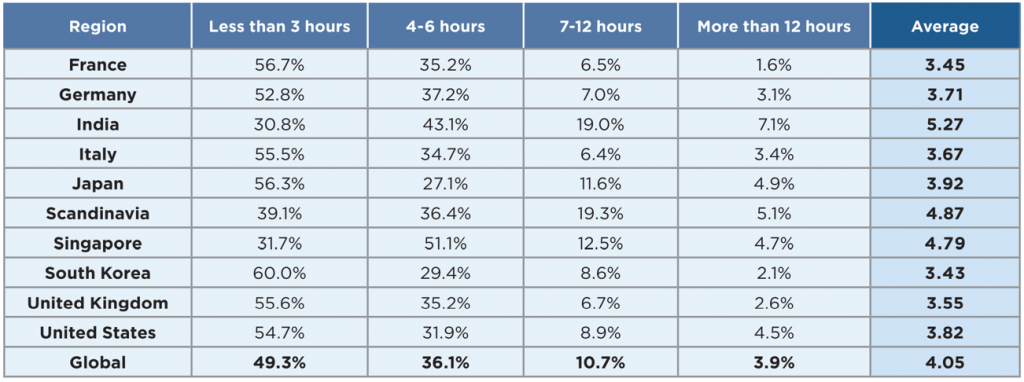The worldwide surge in internet streaming demand rang in the profits for content delivery networks while keeping the remote workforce socially connected.
Content streaming is at the forefront of the remote workforces around the pandemic-stricken world.
In SE Asia, Singaporeans have apparently been engaging online video and streaming materials for an average of four hours and 47 minutes every day—one of the highest video consumption rates globally (Figure 1), according to a new global report from content delivery network Limelight Networks.
The report is based on responses from 5,000 consumers ages 18 and older in France, Germany, India, Italy, Japan, Scandinavia, Singapore, South Korea, the United Kingdom, and the United States who watch one hour or more of online video each day.
Said Edwin Koh, Regional Director, Southeast Asia, Limelight Networks: “Applications such as remote collaboration, e-learning and telehealth, had been widely available for some time now. But today, they’re essential to continuing daily activities and professional development in the current environment. Our report emphasizes that online video will remain an important part of our lives.”
Content delivery networks are benefiting from the trend as profits roll in from the online video trend. For consumers, the global demand for streaming has resulted in the evolution of new forms of interactive entertainment. With traditional sports leagues on hold, more people have turned to esports for the first time. With other live events cancelled, many attended their first virtual concert. Similarly, exercise and fitness activities have also gone virtual as workout facilities and gyms remain closed.

Additional insights from the report include:
- Online video has been the proxy for face-to-face social interactions 88% of the time.
- Remote work and professional development relied on online video.
- The lowest average viewing hours were in South Korea, closely followed by France and the UK.
- Over 70% of people have streamed news updates throughout the pandemic.
- Even 60% of baby boomers are live-streaming news and information online.
- There has been increased usage of telehealth.
- Preferences for online video are here to stay.
In the region, Singaporeans are leading the way globally in embracing online learning, with 92% expecting that people will continue to use video-based platforms to learn following the COVID-19 pandemic.
